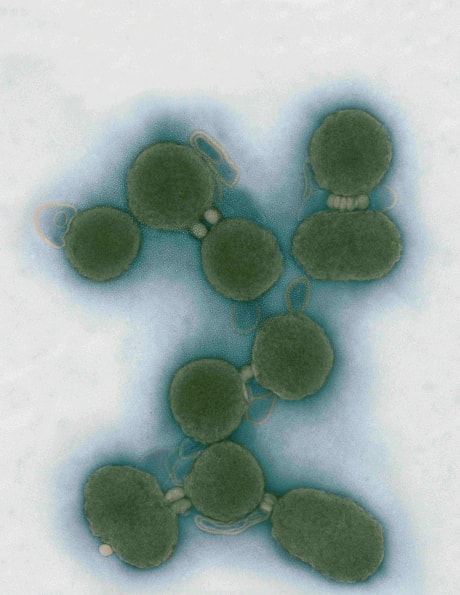TORONTO — In revolutionary research that may end up altering our definition of life, scientists have created the first synthetic cell powered by artificially created DNA.
The achievement caps 15 years of work by a large team of researchers, led by Craig Venter of Human Genome Project fame, who engineered a chromosome and inserted it into a bacterium to create a new living entity.
“This is the first self-replicating species that we’ve had on the planet whose parent is a computer,” Venter told a teleconference presented Thursday by the journal Science, which published the work.
The cell, which contains more than a million DNA base pairs, or genetic letters — a mere speck compared with the six billion in human DNA — was created by writing genetic code on a computer, then combining a cocktail of chemicals to create a chromosome.
“We start with four bottles of chemicals and the digital code in the computer from DNA sequence,” said Venter.
“You substitute the synthetic chromosome for the one that’s in the cell and all of a sudden everything in the cell is made from that synthetic chromosome.”
Once the bacterial cell was “booted up,” it immediately began making proteins as prescribed by the new DNA and began dividing and replicating by the millions.
“This is an important step we think both scientifically and philosophically,” said Venter. “It certainly changed my views of the definitions of life and how life works.”
Geneticist Stephen Scherer, a senior scientist at Toronto’s Hospital for Sick Children, called the research an “impressive technical feat.”
“I suspect that when we look back, this achievement will be seen as a landmark in biology having somewhat similar impact to when Dolly the cloned sheep was introduced to the world,” Scherer, who was not involved in the research, said by email.
Venter said the synthetic cell is the first — and early — step in designing artificial life forms that could one day produce biological fuels, pharmaceuticals and even foods.
“We actually believe this is going to be a very powerful set of tools and we’re already starting numerous avenues to use this tool.”
A company Venter and co-author Dr. Hamilton Smith formed, called Synthetic Genomics, is working with Exxon Mobil to develop new strains of algae that can capture carbon dioxide from the atmosphere and other sources to make hydrocarbons that can be refined into fuels.
The U.S. National Institutes of Health is also funding a project with pharmaceutical giant Novartis to try to make synthetic DNA that could be used to manufacture vaccines in 24 hours instead of the weeks to months it normally takes.
“When you see how long it took to get an H1N1 vaccine out, we think we can shorten that process quite substantially,” he said.
Artificial DNA might also solve the problem of developing vaccines for quickly evolving viruses like the common cold or HIV.
For all the possible upsides, the researchers acknowledged there are ethical issues involved with creating synthetic life, as well as fears about potential harms.
The research team said steps have been taken to ensure the synthetic bacterium cannot be confused with a cell containing natural DNA.
Written into its genetic code are “watermarks” that spell out the signatures of all the researchers involved, a website address and three quotations.
Robert Friedman, head of policy at the J. Craig Venter Institute in California, conceded that a potential bioterrorist could try to use the technology to synthesize pathogens, which are contained in regulated laboratories and closely guarded government facilities.
“This is a new way to do that. Rather than having to find it in nature or steal it, one could synthesize it,” he said, noting that there is a pending registry that would flag authorities if someone tried to order the genetic and chemical makings for synthetic DNA.
“I think we have ways to deal with the potential misuse and it gives us the opportunity to really take advantage of the potential benefits.”
The synthetic cells — a colony of millions of blue bacteria that are currently frozen — also have their own safeguards, including the fact that they would be difficult to grow outside the laboratory.
“On containment, that’s a really critical issue and it’s one of the most important issues to us,” said Venter, noting that the concept was submitted for review to independent bioethicists long before the critical research even began.
